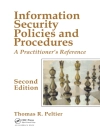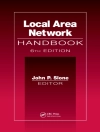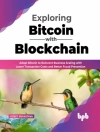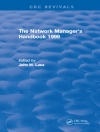This book has a focus on the development and deployment of the Industrial Internet of Things (IIo T) paradigm, discussing frameworks, methodologies, benefits and limitations, as well as providing case studies of employing the Io T vision in the industrial domain. IIo T is becoming an attractive business reality for many organisations such as manufacturing, logistics, oil and gas, energy and other utilities, mining, aviation, and many more. The opportunities for this paradigm are huge, and according to one report, the IIo T market is predicted to reach $125 billion by 2021. The driving philosophy behind the IIo T is that smart machines are better than humans at accurately capturing, analysing and communicating real-time data. The underlying technologies include distributed computing, machine learning, artificial intelligence, and machine-to-machine communication, with a typical IIo T system consisting of intelligent systems (applications, controllers, sensors, and security mechanisms), data communication infrastructure (cloud computing, edge computing, etc.), data analytics (to support business intelligence and corporate decision making), and most importantly the human element. The promised benefits of the IIo T include enhanced safety, better reliability, smart metering, inventory management, equipment tracking, and facilities management. There are, however, numerous issues that are also becoming the focus of active research, such as concerns regarding service availability, data security, and device communication. Lack of ubiquitous interoperability between heterogeneous devices is also a major concern.
This book intends to fill a gap in the IIo T literature by providing the scientific contributions and latest developments from researchers and practitioners of international repute, focusing on frameworks, methodologies, benefits, and inherent issues/barriers to connected environments, especially in industrial settings.
The intendedaudience includes network specialists, hardware engineers, and security experts who wish to adopt newer approaches for device connectivity, Io T security, and sensor-based devices design. University level students, researchers and practitioners will also find the latest innovation in technology and newer approaches relevant to the IIo T from a distributed computing perspective.
Jadual kandungan
Part I: Concepts and Principles (covering topics such as principles, architectures, underlying technologies, and historical perspective)
Part II: Frameworks and Methodologies (covering topics such as communication, networking, connectivity, standards and management)
Mengenai Pengarang
Prof. Dr. Zaigham Mahmood is a Senior Technology Consultant at Debesis Education UK and a Professor at the Shijiazhuang Tiedao University in Hebei, China. He also holds positions as a Foreign Professor at NUST and IIU in Islamabad, Pakistan. He previously served as a Reader (Associate Professor) at the University of Derby, UK, and a Professor Extraordinaire at the North-West University, Potchefstroom, South Africa. His many publications include the Springer titles Security, Privacy and Trust in the Io T Environment, Guide to Ambient Intelligence in the Io T Environment, Fog Computing, Smart Cities, Connected Environments for the Internet of Things, Software Project Management for Distributed Computing, Requirements Engineering for Service and Cloud Computing, Connectivity Frameworks for Smart Devices, Data Science and Big Data Computing, Cloud Computing: Challenges, Limitations and R&D Solutions, Continued Rise of the Cloud, Cloud Computing: Methods and Practical Approaches, Software Engineering Frameworks for the Cloud Computing Paradigm, and Cloud Computing for Enterprise Architectures.












